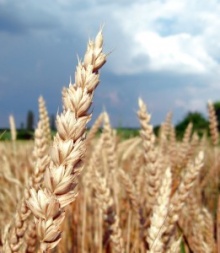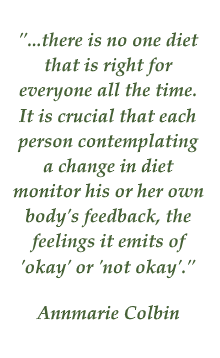Soaking grains for optimal nourishment is a simple practice that nets huge benefits
New information on grain cooking suggests the traditional method of soaking grains is healthier than our Western practice of simply boiling to tenderness or dry cooking (as in granola).
Soaking renders the nutrients in grains more digestible and more easily assimilated by our bodies. This is much the same process as soaking dry beans overnight (and why we shouldn't do as some modern recipes are suggesting and skip the soak for our dry beans). It's possible that this soak also makes the grains more alkaline after cooking since it increases the amount of available calcium.
With the increase in grain consumption, there has been an increase in the number of people complaining of difficulty in digesting grain, but after properly soaking grains, these people report fewer or no problems.
There are whole books devoted to the "evils of grain consumption". This is a recent development no doubt due to this increased prevalence of grain sensitivity. But grains have supported millions, whole societies, for centuries. Is it the grains themselves? or could it be our method of cooking grains that is the problem?
This is especially important information for every vegan and vegetarian out there, whose diet consists of such a large proportion of grains. You've been told how good they are for you, but you're not getting all the nourishment from them you're supposed to. In addition, the non-neutralized phytic acid can "steal" the nutrients from your other foods by binding to minerals in your digestive tract, blocking their absorption.
What does soaking grains accomplish?

The soaking breaks down some of the hard-to-digest proteins, making assimilation much easier, and neutralizes phytic acid, which is an anti-nutrient that prevents absorption of minerals such as calcium, magnesium, iron, zinc, and copper.
Because grains are seeds, they also contain enzyme inhibitors, which protect the seed from germinating until the conditions are proper for growth. If ingested, these inhibitors can prevent the body's enzymes from working properly, and digestion will be hindered. Soaking grains neutralizes these inhibitors and stimulates the production of beneficial enzymes and increases vitamin content, because the seed is being activated toward growth. This active, live seed is nutritionally superior to one that is "closed up".
Further "proof" that soaking grains is the superior method will be found in your own experience. I've always loved brown rice, but ironically, didn't eat it all that much....until I started soaking it first. My desire for it has increased, my enjoyment of it has increased, and the nourished fulfillment I feel after eating it was an unexpected surprise.
How to soak grains
This is the basic method of soaking grains, as presented by Sally Fallon in her book Nourishing Traditions.
Soaking Whole Grains
1 cup grain
2 tablespoons of an acid*
warm water - the same amount you would need to cook that particular grain
Put all into the cooking vessel you plan to use to cook the grain, and let soak for a minimum of 7 hours and up to as long as 24 hours. Then cook as usual, skimming any foam or scum that develops on top, as it can contain released impurities.
*For the acid, you can use plain yogurt, whey (from milk, yogurt, kefir, etc.), kefir, buttermilk, vinegar, or lemon juice.
The cultured products--yogurt, whey, kefir, and buttermilk--are most highly recommended as they give the added benefit of providing the beneficial bacteria, like lactobacilli, which can, in essence, begin to pre-digest the grain for you. As Fallon states, this is what the first and second stomachs do in the four-stomached herbivores.
The vinegar and lemon juice offer an alternative acid in a pinch and give those with true milk allergies an option. If you're lactose intolerant, the cultured products may be fine for you, since most of the lactose has been broken down to lactic acid. All acid choices serve to discourage spoilage from unfriendly bacteria, a more important consideration during a longer soak.
Which of these acids is best for soaking grains?
Be aware that some of the acids recommended can produce a sour note in your grain. Some people enjoy this flavor, while others do not. In my experience, kefir and yogurt and yogurt whey do not create a sour taste, but raw milk whey does (which I personally didn't care for). The kefir I used was homemade from raw milk, but commercial kefir would be even milder.
Overall, yogurt and yogurt whey are
the best options, both for good flavor and easy availability. See here
for tips on how to manage a container of yogurt. (Bet you didn't know yogurt needs management!)
If you are having issues with a sour flavor, there are a number of options for you to experiment with. (Soaked grains often hold more liquid than unsoaked, so if you alter the basic method of soaking grains remember to add enough extra water to compensate for the acid you're omitting.)
- First try a mild commercial yogurt (like Dannon or organic Stonyfield, if you can find it) or the whey from yogurt
for your acid. This page shows an easy way to always
have yogurt whey available for soaking grains. This produces the mildest flavor.
- Lessen the amount of acid until it becomes palatable to you. You will be sacrificing some, but not all, of the
nutritional benefit of the soaking. Many are happy with this arrangement, using half the prescribed amount of acid,
or 1 tablespoon per cup of grain.
- You can rinse your grains after soaking and use fresh water for cooking. This raises the question, however, of
whether the soaking liquid contains nutrients that you don't want thrown down the drain. Hopefully, future studies will
answer this question.
- You can soak grains in plain warm water. One study shows there is phytate reduction with a plain water soak, but
again, like the other alternatives, you will lose at least some of the nutritional benefits, as well as the protection
from spoilage. So be extra careful when using straight water, and throw it out if it develops an unpleasant odor or
questionable appearance.
- Some people are experimenting with other acid fruits besides lemon--oranges and grapefruits, specifically. While they wouldn't offer the same benefits as the cultured milk products, they might be comparable to the results obtained by vinegar and lemon juice. These fresh fruit juices will add some living enzymes.
Bottom line, any soaking method will increase the nutritional qualities of a grain, but for optimal nutritional benefit, one should follow the traditional methods of including an acid.
Of the grains, whole brown rice and whole millet are least in need of the soaking process as they contain lower amounts of phytates than other grains, but the soak is still recommended to neutralize those they do have.
If you just don't have the time to soak your rice or millet, Fallon suggests long-cooking, like 2 hours, in a high-mineral, gelatinous broth, like bone broth. I'd rather squeeze in a couple hours of soaking and cook as usual. But these two grains will work the best when you're in a rush.
To prepare basic soaked brown rice:
Basic Soaked Brown Rice
2 cups rice
4 cups warm water
4 tablespoons yogurt, whey, kefir, buttermilk, vinegar, or lemon juice
Place all in your cooking vessel. Let soak at least 7 hours, and up to 24 hours. Bring to a boil and remove any scum. Add 1 teaspoon sea salt and reduce heat to the lowest setting. Cover tightly and cook for 45 minutes without removing the lid.
Just cut all ingredients proportionately to cook smaller amounts of rice.
Fallon's recipe calls for the addition of 2-4 tablespoons of butter at the same time as adding the salt. The vitamins A and D in butter help us absorb the vitamins and minerals found in grains. When fasting, it is recommended that you use the butter, as there are theories that the body needs a fat to get rid of fat-soluble toxins, and it is a fact that we need saturated fats in our diets. You might use ghee, aka clarified butter, if you prefer, from which the milk solids have been removed.
This will create a slightly softer finished grain, but not mushy. People with sensitive digestive systems will definitely notice the gentler feel of soaked grains, since they are so much easier on the system.
Further information for soaking grains...
Brown Rice Recipes Get new ideas for dishes with the classic whole grain, brown rice.
Cooking Quinoa Specific how-tos on properly soaking and cooking quinoa. Or go directly to Quinoa Recipes for my favorite uses of quinoa.
Millet Recipes Learn to use this extraordinary grain in great-tasting
millet recipes.
Kitchari Cleanse and Recipes Learn about the many healthful uses for this classic Indian dish of rice and beans. So healthy, Ayurvedic wisdom prescribes a "kitchari cleanse" to soothe the system, while fancier recipes can be used anytime.
Top 4 Healthy Grains Find out what all the nutritional buzz is about on these four top-rated grains.
More information on Sally Fallon...
Sally Fallon has been the pioneer in educating the West on the concept of soaking grains. She reintroduced us to this ancient practice in her book Nourishing Traditions, written with Mary Enig, Ph.D.
Her quest was to duplicate the food preparation methods of our ancestors, the cooking practices of traditional, pre-industrial societies, whose health was superior to ours in modern industrialized countries. Besides the soaking of grains, there are many wonderful cooking practices shared in her book.
Newest Recipes

Maple Millet Cakes

Healthy Chocolate

Homemade Frozen Yogurt

Shrimp and Red Pepper Quinoa

Breakfast Quinoa
Related Pages
Organic Produce When it's most important to choose
organic and which fruits and vegetables are considered safe to consume non-organic.Understanding the Dangers of Microwave Ovens. Learn about the studies that show microwaves create toxic elements in our foods.
Cleansing Diets can be used to kick-start a new, healthier eating plan and lifestyle.
Top 4 Healthy Grains Four grains are especially making headlines in the news and in nutritional circles for their superior dietary value.
Healthy Cooking Oils The healthiest cooking oils may not be what you expect. Learn which fats contribute to a healthy body.
Healthy Salad Dressing Recipes Throw out your bottled dressings and learn to make healthy salad dressings from fresh ingredients.

